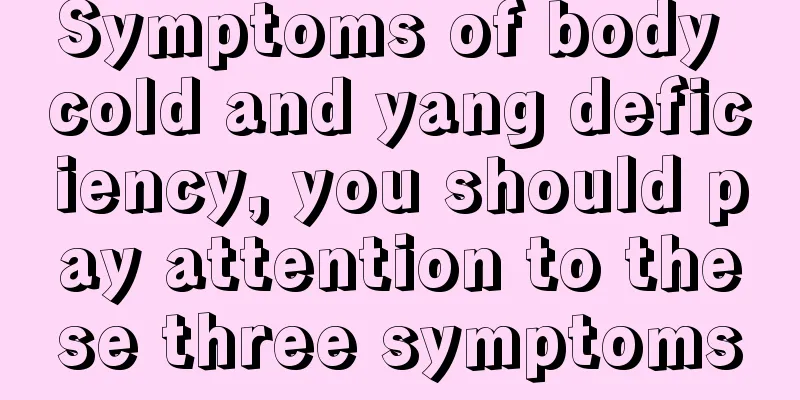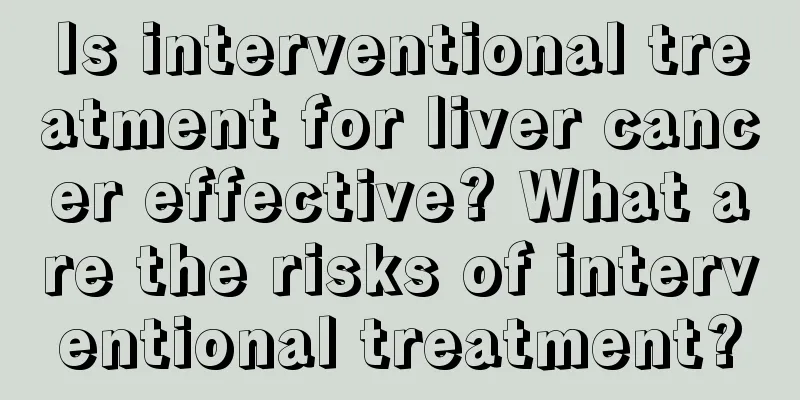Sinus tachycardia in adolescence, this is a good way to prevent it

|
The occurrence of sinus tachycardia during adolescence must be a sign of a certain disease, and correct treatment must be given according to the cause and symptoms of the disease. Prevention is also very important. You must develop a regular daily life and participate in appropriate exercise, but you must not overwork. 1. Symptoms Sinus tachycardia has no special symptoms and is often caused by other diseases. Its clinical symptoms are related to the degree to which the increased heart rate affects hemodynamic disorders and is also related to the underlying heart state. When the heart rate increases slightly, cardiac output increases, the heart's working efficiency increases, and the patient may not have any symptoms. When the heart rate is too fast, the patient may experience symptoms such as palpitations, shortness of breath, chest tightness, irritability, and even chest pain. Symptoms also vary greatly from person to person. Normally, the heart's working efficiency is at its highest when the heart rate increases from about 70 beats/min at rest to about 2.5 times (180 beats/min). When it exceeds 180 beats/min, the heart's working efficiency is significantly reduced and cannot meet the body's needs. This is because when the heart rate is >180 beats/min, myocardial oxygen consumption increases significantly, coronary blood flow decreases (more obvious in patients with coronary heart disease), the end-diastole is shortened, ventricular filling decreases, and cardiac output per beat decreases. The prognosis of sinus tachycardia is related to the heart rate and underlying heart condition. Patients with mild tachycardia, heart rate <150 beats/min, and no organic heart disease have a good prognosis. If a person has organic heart disease, a heart rate of 150 beats/min can increase myocardial oxygen consumption and reduce cardiac output, thus aggravating the original heart disease. 2. Prevention: 1. Actively treating the primary disease and eliminating the inducement is the key to reducing the incidence of sinus tachycardia. 2. Avoid mental stress, quit smoking and drinking, and reduce the risk factors of this disease; maintain a regular daily routine, eat properly, and avoid overwork; do adequate physical exercise to prevent colds. Drug therapy may control recurrence by directly acting on the reentry circuit. Indications for drug treatment include patients whose attacks are frequent, affect their normal life or whose symptoms are severe but who are unwilling or unable to undergo catheter radiofrequency ablation. Patients with occasional, brief, or mild tachycardia episodes may not need medication, or may be given medication when necessary. Avoiding mental stress and excessive fatigue, maintaining a regular life, daily routine, being optimistic and emotionally stable can all reduce the recurrence of the disease. Avoid spicy and irritating foods; quit smoking, drinking and coffee; eat light meals. |
<<: What are the symptoms of high blood sugar after a meal
>>: What medicine is effective for itchy throat and phlegm
Recommend
What are the symptoms of colon tumors
Colon cancer is a relatively common malignant tum...
Is a heart rate of 94 normal?
When people reach old age, they are prone to some...
How to remove fruit stains after a long time?
People drink all kinds of fruit juice in their li...
Patients must combine the diagnosis basis of liver cancer as soon as possible
Liver cancer is a common tumor disease. It can ca...
What should I do if my armpits sweat too much?
If your armpits sweat a lot, you must pay attenti...
There is a section of the back spine that hurts when pressed
Everyone has seen films of the spine on TV. We al...
What are the clinical symptoms of liver cancer? Liver cancer patients should pay attention to three things in their diet
For liver cancer, if the patient has early-stage ...
What are the poisonous plants
Plants are an important part of nature and play i...
What are the early symptoms of lung cancer? How to prevent lung cancer in life
Why do we have to emphasize early screening, earl...
Why does my lower back hurt when I run?
Running is a very healthy way of exercising, but ...
What are the most suitable exercises for ovarian cancer
What are the most suitable sports for ovarian can...
What are the early symptoms of cervical cancer? Will cervical cancer cause irregular bleeding?
Cervical cancer brings great harm to female frien...
How to do radiotherapy care for esophageal cancer
Radiotherapy is one of the key methods for treati...
Is blood in the stool a sign of colon cancer?
Is blood in the stool a sign of colon cancer? Blo...
What color nail polish should I apply on my white hands
Nowadays, many people have white hands, so when b...









